Transforming Jewelry Design with CAD/CAM Technology


Intro
In the world of jewelry design, the glittering allure of gemstones often takes center stage. Yet, beneath the surface of these exquisite creations lies a story interwoven with technology, creativity, and craftsmanship. The advent of Computer-Aided Design (CAD) and Computer-Aided Manufacturing (CAM) has fundamentally shifted how jewelry is conceptualized and executed. Understanding the evolution of these technologies can illuminate their profound impact on artistry and efficiency in the jewelry industry, offering a fresh lens for both seasoned designers and enthusiastic collectors alike.
Overview of Gemstones and Minerals
Gemstones have long been treasured for their beauty and rarity. Track back through history, and you will find that cultures have valued these natural wonders, attributing various meanings and powers to them. From the deep hues of sapphires to the vibrant reds of rubies, these stones hold a special place in human society, often symbolizing wealth, love, or protection.
The interplay between gemstones and their surrounding mineral compositions creates a fascinating narrative of formation and discovery. Each territory on the globe might showcase its unique minerals that contribute to the area's gem quality.
"Gemstones are the history of our Earth, captured in a single stone."
History of Gemstone and Mineral Use
The cycle of human fascination with gemstones can be traced back to ancient civilizations. The Egyptians adorned their burial artifacts with lapis lazuli, believing it would protect the deceased in the afterlife. The Greeks and Romans referred to gems in their mythologies, elevating their status as symbols of power and divine favor. Historical texts illuminate how these stones transcended mere decoration; they were often imbued with symbolic meanings reflective of the cultures that cherished them.
Significance in Culture and Society
From royalty wearing diamonds as a symbol of invincibility to healers crafting amulets from semiprecious stones, gemstones have played diversified roles in society. In different cultures, individuals have crafted intricate stories around gemstones, making them more than mere decorative items but instead carriers of heritage, beliefs, and identity.
Gemstone Formation and Properties
The formation of gemstones is a marvel of natural processes. From the heart of the Earth, minerals undergo metamorphic changes influenced by heat, pressure, and chemical reactions over millennia. Understanding these processes not only enriches one's knowledge but also helps jewelry designers make informed choices based on the properties of these stones.
Formation Process of Gemstones
To fathom how gemstones originate, one must look at geological processes. Rocks breaking down into mineral compositions and crystallizing over time leads to the creation of breathtaking gems. While some gems are formed underwater, others emerge from volcanic activity, molding the unique traits they exhibit.
Properties that Define Gemstones
Several properties come into play when discussing gemstones. Color, hardness, and luster are fundamental to their classification:
- Color: Ranges from the vibrant greens of emeralds to soft pinks of rose quartz.
- Hardness: Measured by the Mohs scale, it determines how easily a stone can be scratched.
- Luster: Refers to how light interacts with the gemstone's surface, affecting its visual appeal.
Classification based on Color, Hardness, and Luster
When categorizing gemstones, one might usually think of basic divisions like color or hardness. However, a deeper dive reveals complexities. For instance, a sapphire can present in multiple colors yet retains its hardness characteristics, akin to the diamond. Understanding such nuances empowers designers to choose appropriate materials in their work.
Types of Gemstones
There exists a fascinating variety of gemstones, each adorned with unique qualities. Broadly, gemstones can be classified into two major categories: precious and semi-precious. The designation often hinges more on historical precedence rather than intrinsic qualities.
Precious vs. Semi-Precious Gemstones
Precious stones, including diamonds, rubies, sapphires, and emeralds, generally command more on the market due to their rarity and perceived value. In contrast, semi-precious stones like amethyst, garnet, or citrine are abundant but still cherished for their aesthetic appeal.
Common Gemstone Varieties
- Diamond: Known for its unmatched hardness and brilliance.
- Ruby: A red variant of corundum, representing passion and vitality.
- Sapphire: Available in various colors, renowned for its durability.
- Amethyst: Valued historically, it features lavender to deep purple hues.
Exotic and Rare Gemstones
Certain gemstones capture the imagination due to their rarity and stunning visuals. The hues of alexandrite vary with lighting, while the deep blue of tanzanite flows effortlessly into a world of uniqueness. Creators often seek these rare stones to elevate their designs, merging exclusivity with artistry.
Identifying and Evaluating Gemstones
For those in the jewelry field, being able to identify and evaluate gemstones is such an essential skill. Different factors influence a stone’s value, and understanding these can be the difference between a mediocre collection and a stunning showcase.
Factors Affecting Gemstone Value
Several elements come into play when determining a gemstone's worth:
- Rarity: How available is the gemstone?
- Quality: Is it flawless, or does it have visible inclusions?
- Market Demand: Trends can vary widely, affecting desirability.
Techniques for Gemstone Identification
A keen eye is vital for identification. Tools such as a loupe help magnify the stone's details, while refractometers and spectroscopes reveal its optical properties. These might sound technical, but they bring clarity to a gem's true nature.
Assessing Gemstone Quality
When evaluating gemstones, several aspects should be considered as one assesses its quality. Abrasion, clarity, brilliance, and cut play pivotal roles, creating a well-rounded understanding of the gemstone's overall beauty and worth.
Caring for Gemstones
Once gemstones are acquired, understanding their care is essential to preserving their beauty. Proper cleaning and storing methods can prolong their lifespan, ensuring they shine brightly for years to come.
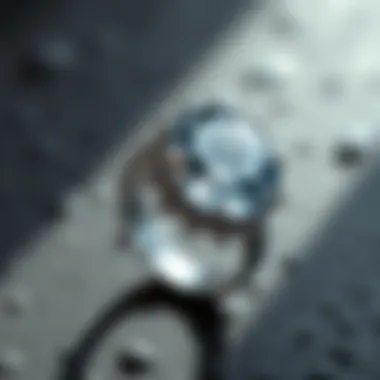

Cleaning and Storing Gemstones Properly
Different stones have varying sensitivities when it comes to cleaning. For instance, softer stones may need gentle treatment to avoid scratches. It is advisable to use a microfiber cloth for polishing and store them separately to prevent scratches.
Avoiding Common Mistakes in Gemstone Care
Many an enthusiast has made the mistake of exposing their jewels to extreme temperature changes or chemicals. Being mindful of even the simplest practices in care can make a world of difference.
Preservation Tips for Specific Gem Types
Certain stones require distinct handling practices. For opals, which can be sensitive, occasional soaking in water might help maintain their moisture levels. Understanding and catering to these needs reflects not just care but respect for the material.
As the conversation around CAD and CAM unfolds, we will explore how these technologies enhance not just the design process but the entire lifecycle of jewelry-making, marrying tradition with innovation.
Preamble to CAD/CAM in Jewelry Design
The integration of Computer-Aided Design (CAD) and Computer-Aided Manufacturing (CAM) represents a significant shift in the landscape of jewelry design. As the jewelry industry continues to evolve, it finds itself increasingly intertwined with technology. This section focuses on the indispensable role that CAD/CAM plays in modern jewelry-making, providing an essential framework for designers and gemstone enthusiasts alike. By exploring how these technological tools facilitate creativity and efficiency, we can better appreciate their impact on both the design process and production workflow.
Understanding CAD/CAM Technology
At its core, CAD refers to software that allows designers to create detailed 2D or 3D models of their jewelry creations. It enables precise measurements, materials specifications, and intricate designs that traditional methods can't easily achieve. The beauty of CAD lies in its flexibility; designers can tweak models with a few clicks, making adjustments that might take hours or days with manual techniques.
On the other hand, CAM technology takes the virtual designs and translates them into the physical world. It involves similar tools that automate manufacturing processes, fabricating jewelry based on the designs produced. Machines like CNC (Computer Numerical Control) machines carve out pieces from various materials with breathtaking accuracy. Through the integration of CAD and CAM, a designer can create and produce a stunning piece of jewelry within a significantly reduced time frame, with fewer errors and increased production rates.
This synergy enhances the designer's creative expression, allowing them to push boundaries and experiment in ways once thought impossible. The design possibilities are endless, as changes can be made on the fly without the expense of wasting material. Futhermore, clients can visualize the end product through realistic 3D renders, making collaboration and refinement seamless.
Historical Context of Jewelry Design Technology
The journey of CAD/CAM in jewelry design does not begin overnight; it is the result of a long progression from artisanal craft to a more systematic form of design and production. Before the advent of these technologies, budding jewelers relied heavily on traditional techniques handed down through generations. The painstaking methods of crafting by hand, though preserving a certain charm and authenticity, limited the scope and scale of production.
The shift can be clearly seen in the late 20th century, when digital technology began to infiltrate various industries. In the realm of jewelry, it was during the early 1980s that CAD software began making waves, allowing for a more scientific approach to design. This was coupled with the growth of rapid prototyping techniques in the 1990s, which further revolutionized how jewelry was produced.
Jewelers who once carve their ideas in wax could now quickly print a prototype from a 3D model, altering designs with less hassle and bringing creativity to life more swiftly. With a history that intertwines traditional craftsmanship and advanced technology, the evolution of CAD/CAM is a testament to how innovation ushers in new paradigms in jewelry artistry.
The Components of CAD in Jewelry Design
When one delves into the world of jewelry design, the components of Computer-Aided Design (CAD) play a pivotal role in defining not just the aesthetics but the very essence of the pieces created. In this section, we explore the various facets of CAD that contribute to the modern artistry and functionality that modern jewelry embodies.
Software Tools for CAD in Jewelry
The backbone of CAD in jewelry design rests on the software tools that allow designers to bring their visions to life. Software such as RhinoGold, MatrixGold, and JewelCAD serve as pivotal platforms where ideas morph into 3D representations. Each piece of software has its own strengths, tailored either for intricate detailing or mass production.
- RhinoGold: Renowned for its versatility in craftsmanship, it offers robust tools for modeling which are indispensable for those who thrive on intricate designs.
- MatrixGold: Combining CAD with manufacturing, this software caters specifically to the jewelry industry, providing features that allow designers to automate parts of their workflow.
- JewelCAD: Popular among beginners, it provides a user-friendly interface that helps spark creativity without the steep learning curve.
By adopting these tools, designers can experiment freely, ensuring that every detail is captured before a single gemstone or metal is engaged in the physical process.
3D Modeling Techniques
3D modeling techniques form the core of digital design. These methods provide the freedom to manipulate and refine designs at a granular level. Techniques such as parametric modeling and polygonal modeling drive the possibilities of what can be achieved.
- Parametric Modeling: This technique allows designers to set parameters that define the shape and structure of the jewelry. Adjusting one parameter will automatically update the entire model. It’s like setting your compass and letting it guide your compass without losing the essence of your vision.
- Polygonal Modeling: This technique breaks down a model into polygons, enabling a more organic shape that can lead to unique and avant-garde designs. It’s quite freeing, allowing designers to think outside the box – or, more aptly, outside the polygon.
Mastering these techniques fosters the ability to iteratively design rather than rigidly adhere to initial ideas.
Rendering and Visualization
A critical step in the dynamics of CAD is rendering and visualization. This process transforms the technical drawings into lifelike images, allowing designers and clients to experience the piece before it's made.
- Rendering: This is where mathematics meets art. Advanced rendering engines, like V-Ray or KeyShot, simulate how light interacts with materials. A beautifully rendered image can effectively convey the intended look and feel of the jewelry, influencing buying decisions or adjustments before production.
- Visualization Tools: Incorporating virtual reality (VR) as a visualization technique has gained traction. This experience allows clients to virtually try on pieces and see them from multiple angles, providing a deep sense of immersion in the design.
"Visualizations bring our wildest creative concepts into the realm of reality, creating a bridge between imagination and craftsmanship."
In sum, the components of CAD—from software tools to modeling techniques and rendering—establish a foundation that redefines jewelry design. With these tools, designers not only streamline their workflow but also enhance their creative potential, pushing boundaries and innovating in ways previously thought impossible. Designers wield the power of visualization to inspire, create, and redefine elegance in every design, ensuring the jewelry industry continuously evolves.
The Role of CAM in Jewelry Manufacturing
The landscape of jewelry manufacturing has undergone a significant transformation with the advent of Computer-Aided Manufacturing (CAM). This shift has not just made production faster but has also elevated the quality and precision of jewelry designs. In the world of jewelry design, CAM serves as the linchpin, interlinking innovative technology with traditional craftsmanship, allowing artisans to produce intricate designs that were once deemed unattainable.
Machinery Used in CAM Processes
The backbone of CAM in jewelry manufacturing lies in its machinery, which is a fascinating blend of ingenuity and technology. Here are a few key types:
- CNC Milling Machines: Computer Numerical Control (CNC) milling machines sculpt materials with pinpoint precision, shaping metal and other materials down to the smallest detail. Artists can transfer their digital designs directly to these machines, which execute the plan with an exactness that human hands alone simply cannot match.
- 3D Printers: As these machines become more prevalent, they've changed the game completely. Jewelers can create prototypes in wax or even print directly in metal, providing a way to visualize a piece before the final work begins. The use of 3D printing allows for a far quicker turnaround from concept to production.
- Laser Cutters: These offer another layer of precision. Utilizing focused lasers to cut through materials, they create intricate patterns with a level of detail that manual tools struggle to achieve.
These machines not only increase productivity but also minimize waste, which is crucial in today's environmentally conscious climate.
Integration of CAD and CAM Systems
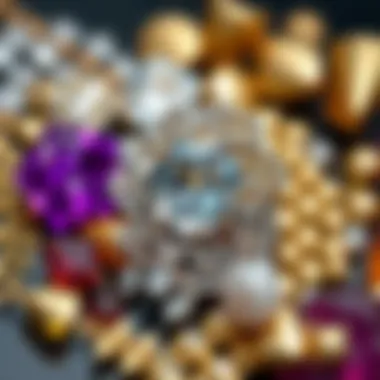
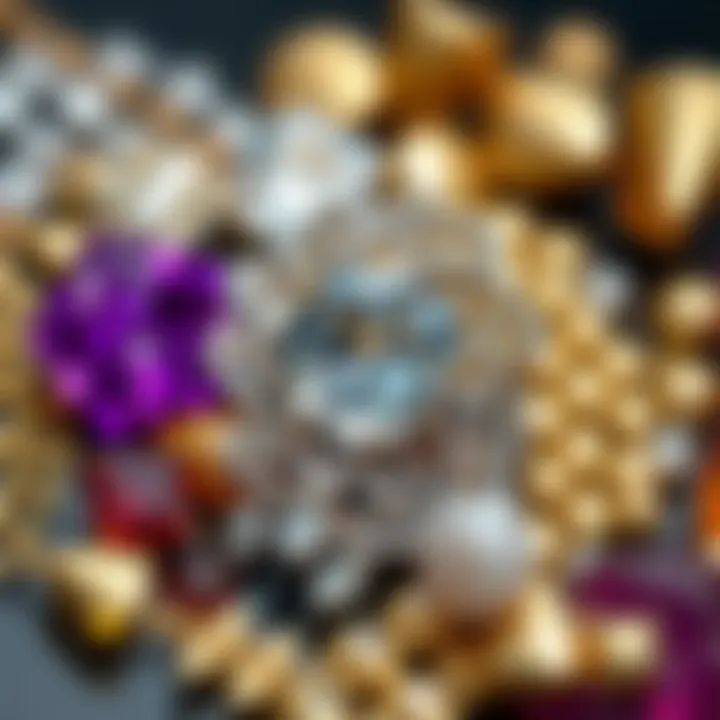
The synergy between CAD and CAM is where the magic truly happens. CAD software lays the groundwork for design, enabling jewelers to see their creations in 3D, before they even touch any material. Once a design is finalized in CAD, it is seamlessly translated into CAM instructions. This integration offers multiple advantages:
- Streamlined Workflow: The transition from design to production is smoother, with fewer errors and misunderstandings.
- Rapid Prototyping: Artists can quickly tweak designs and produce prototypes, which allows for iterations and rapid development cycles.
- Consistency and Quality Control: The computerized processes ensure that each item produced matches its digital counterpart, maintaining uniformity in production.
This tight integration not only has an impact on efficiency but also on creativity, as designers can experiment with complex forms and structures that traditional manufacturing processes might struggle to realize.
Advantages of CAM in Jewelry Production
The benefits of implementing CAM in jewelry production are indisputable and numerous. Here are some of the key advantages:
- Increased Production Speed: CAM technology drastically reduces manufacturing time. What once took hours or days can now be completed in a fraction of the time.
- Enhanced Precision: The capabilities of CAM machinery enable jewelers to work with microscopic details, elevating the craftsmanship and overall quality of each piece.
- Cost Efficiency: Despite the initial investment in technology, the return comes in the form of reduced labor costs, lower material wastage, and less rework due to errors.
- Customization and Scalability: Jewelers can easily customize designs for individual customers or scale up production for larger orders without compromising quality.
In summary, CAM plays a crucial role in not just modernizing jewelry manufacturing, but also in redefining what is possible for artisans. As these technologies continue to advance, the potential for creativity and innovation in jewelry design expands exponentially.
Design Process in CAD/CAM Jewelry Design
The design process in CAD/CAM jewelry design is a pivotal part of innovation and artistry in this evolving industry. In a world where aesthetics and precision meet technology, understanding this process is vital for both designers and consumers alike. Each step within this journey from concept to creation brings unique opportunities and challenges, highlighting the benefits of modern techniques and software that can take traditional craftsmanship to new heights.
Concept Development and Sketching
The roots of any successful jewelry piece lie in its concepts and sketches. In this phase, ideas take shape, often merging inspiration from nature, architecture, or even emotions. Designers utilize CAD software to morph these initial thoughts into digital sketches that can be manipulated in ways traditional drawing cannot achieve.
When working on concept development, it’s crucial to consider not just aesthetics, but also the functionality and the market trends relevant to potential clients. Benjamin Moore painted his house with colors that inspired the way he designs jewelry, blending everyday experiences with creativity. The digital canvas allows for rapid iteration of designs. Rather than meticulous hand sketches that may require hours, designers can alter shapes instantly, experimenting freely until the desired vision emerges. This adaptability can lead to unique designs that challenge conventions, creating one-of-a-kind pieces that resonate with buyers.
Prototyping with Rapid Prototyping Techniques
Once a design is fleshed out, the next step is creating a prototype. This stage is perhaps the most thrilling for designers, as it’s where their digital sketches leap into the physical sphere. Rapid prototyping techniques, such as 3D printing, make this transformation easier and more efficient. Instead of waiting days or weeks for traditionally made models, a designer can produce a tangible prototype in a matter of hours.
Materials used in this initial phase can vary from wax to photopolymer resins, each offering unique properties that affect the final piece. This immediate feedback loop—between digital and physical—is essential, allowing revisions to happen on the fly. If a piece doesn’t feel right in hand, tweaks can be made in the CAD software, effectively bridging gaps between virtual and tangible without the heavy costs associated with traditional methods. Designers often find that this approach can drastically enhance creativity and innovation in their work.
Finalizing Designs for Production
After prototyping, designs typically undergo a final round of refinement. This crucial phase ensures all elements from the concept to the prototype align with both the design vision and practical production standards. It’s imperative to consider factors such as material limitations, manufacturing capabilities, and the final product's wearability and market fit.
During this phase, designers collaborate extensively with manufacturers, examining the flexibility of the original design against manufacturing processes.
Key factors to address include:
- Material selection: Final choices may differ from initial prototypes, influenced by availability, cost, and the final piece's intended use.
- Technical specifications: Dimensions and tolerances need to be set, essential for ensuring the finished product aligns with design intentions.
- Market preparation: As designers finalize their work, they also need to think about how pieces will be marketed. This can involve creating a narrative around the collection that highlights aspects like craftsmanship or sustainability, drawing consumers in.
"Technology is best when it brings people together." - Matt Mullenweg
For more insights on CAD/CAM in jewelry and other art forms, you can check resources such as Wikipedia or Britannica. They offer structured information on historical and modern contexts that deepen understanding of these subjects.
Materials Used in CAD/CAM Jewelry Processes
In the realm of jewelry design, the materials selected play a pivotal role in defining not only the aesthetic qualities but also the functional aspects of the final piece. The rise of CAD/CAM technology has notably transformed the way designers approach material selection. This section delves into the various materials commonly used in CAD/CAM jewelry processes and the implications of those choices.
Metal Alloys Commonly Utilized
When it comes to metals, the jewelry industry has embraced a variety of alloys to craft stunning pieces. Gold, silver, and platinum are the heavy hitters here, but the importance of alloying cannot be overlooked. For instance, white gold is actually a blend of yellow gold with metals like palladium or nickel, giving it that bright finish necessary for modern design.
Considerations like hardness, color, and oxidation resistance influence the choice of alloys in CAD/CAM production.
- Gold Alloys: The karat system dictates gold's purity, impacting durability and color. 18K gold, for instance, is a popular choice for those seeking a balance of luxury and strength.
- Silver Alloys: Sterling silver, comprising 92.5% silver and 7.5% other metals, is ubiquitous due to its malleability and oxidization properties. Designers can create intricate designs with superior flow.
- Bronze and Copper: Often used for unique, handcrafted pieces, these metals offer a rustic finish. Their advantages include affordability and ease of manipulation in design.
Each of these metals interacts differently with CAD/CAM tools, impacting how designs are rendered and manufactured. Consequently, selecting the right alloy is fundamental for achieving the desired end product.
Gemstones and Their Compatibility
Gemstones add a unique flair to jewelry, yet their compatibility with CAD/CAM techniques is a crucial aspect often missed. Starting from soft stones like opal, which may not withstand heavy machinery, to harder stones like diamond, their physical and optical properties dictate how they are incorporated into designs.
"Leveraging technology to consider gemstone compatibility ensures that designs retain integrity throughout the manufacturing process."
- Hardness and Durability: Understanding the Mohs hardness scale helps in choosing suitable stones for everyday wear versus statement pieces.
- Weight Considerations: Heavier gemstones can affect the balance of the piece. Using CAD tools enables designers to visualize and assess weight distribution effectively.
- Setting Techniques: Different stones require specific setting styles—some demand prongs, while others may be suited to bezel settings. CAD allows for precise calculations in placement and security of each gemstone.
By aligning the design intent with these physical properties, jewelry designers can create works that are both beautiful and practical.
Innovations in Synthetic Materials
The exploration of synthetic materials has expanded the horizons of jewelry design in ways one could only dream of a few decades back. Not only are these materials more sustainable, but they also offer consistency that natural materials might lack. For instance, synthetic gemstones, like moissanite and lab-grown diamonds, have gained traction for their ethical and environmental implications.
Moreover, materials such as thermoplastic polymers and resins introduce new realms of creativity for designers. They hold properties that make them both durable and adjustable in form. With CAD/CAM, intricate layer designs can be executed without the risk of material distortion.
- Cost-Effectiveness: Synthetic materials often reduce overall produce costs while maintaining aesthetic qualities that rival natural materials.
- Environmental Impact: The production of synthetic stones significantly lowers ecological footprints compared to traditional mining practices.
- Customization Potential: CAD/CAM enables designers to experiment with shapes and colors in a way that was previously unattainable, allowing for personal expression in designs.
Adopting synthetic materials aligns with contemporary values of sustainability, making it a forward-thinking approach to jewelry creation. As awareness grows about the impact of traditional crafting methods, the industry is likely to see an accelerated shift towards these innovative alternatives.
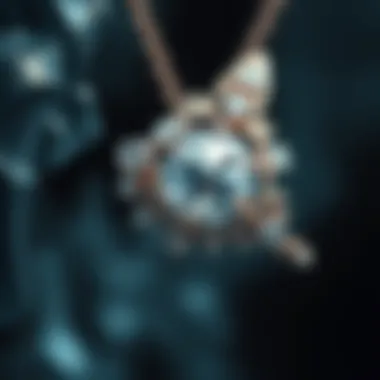
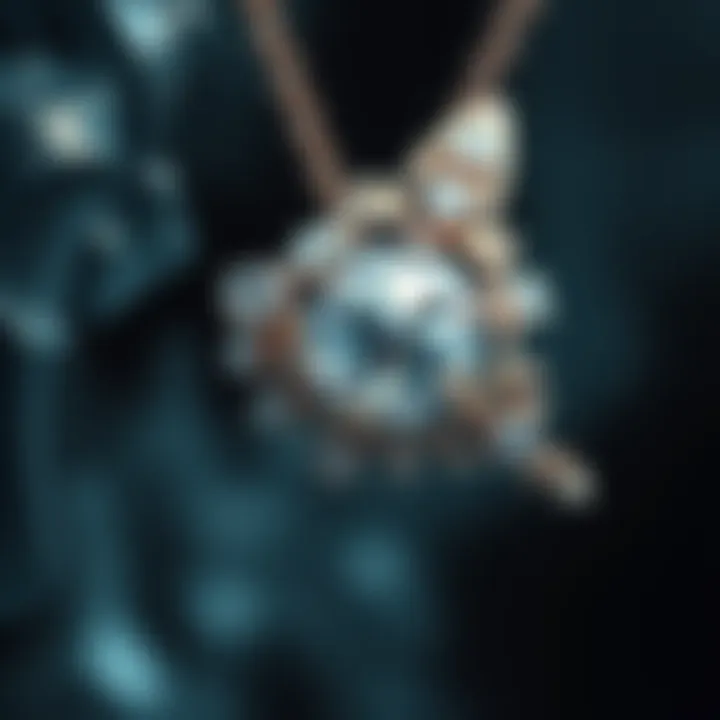
In summary, understanding the materials used in CAD/CAM processes enriches the jewelry design discourse. This impacts everything from the creation to environmental considerations, underscoring the symbiotic relationship between material selection and design technology.
Impact of CAD/CAM on the Jewelry Industry
The jewelry industry is at a crossroads, where tradition meets innovation. The integration of Computer-Aided Design (CAD) and Computer-Aided Manufacturing (CAM) has fundamentally altered how jewelry is designed and produced. These technologies have reshaped workflows, enhanced creativity, and streamlined production. In an ever-evolving market, it's essential to understand the significance of CAD/CAM in unlocking new avenues for designers and manufacturers alike.
Enhancing Creativity and Customization
The introduction of CAD software grants designers a sandbox for creative exploration. It's not just about drawing up plans; it’s about pushing boundaries. Imagine a jeweler wanting to incorporate intricate filigree patterns into their designs. Traditional methods might limit their capabilities, but with CAD, they can visualize these elements in stunning detail before the first piece of metal is cut.
This level of innovation brings forth customization like never before. Customers today often seek unique pieces that reflect their personalities. CAD allows designers to create one-off items that are tailored to individual specifications. They can easily adjust dimensions, materials, and textures, enabling a bespoke experience for clientele.
- Greater experimentation with shapes and styles
- Flawless representation of complex designs
- Efficient revisions based on client feedback
Reducing Costs and Lead Times
One of the tangible benefits of adopting CAD/CAM in jewelry design is the significant reduction in costs and production times. Designers, through precise modeling, minimize errors that often occur in traditional handcrafting methods. Errors can be costly, both in materials and time. With CAD, the potential for mistakes diminishes; everyone knows that time is money.
Furthermore, CAM systems allow for quicker production. Once a design is finalized, machining it can happen rapidly with the help of 3D printers and CNC machines. The speed of production translates directly into faster delivery times for customers. This is particularly advantageous in a market that increasingly values immediacy.
"The implementation of CAD/CAM can result in up to a 40% reduction in production times while simultaneously slashing costs."
- Less wasted materials due to precise specifications
- Faster prototyping leading to timely product launch
- Competitive pricing for customers due to lower overhead
Sustainability Concerns and Solutions
As the world grapples with environmental issues, sustainability has become a key concern for industries, including jewelry. CAD/CAM technologies provide an avenue to create more environmentally friendly practices. Designers can simulate and visualize resource use before any production begins, allowing for more efficient practices.
For example, by generating digital prototypes instead of physical ones, designers can cut down on the waste typically associated with sample creation. This digital-first approach ensures that every step is deliberate and thoughtfully considered.
Moreover, the ability to model specific quantities and materials needed reduces surplus materials, which can be detrimental to the environment if improperly disposed of.
- Use of recycled metals in designs
- Implementation of sustainable sourcing practices for gemstones
- Efficient use of resources minimizes ecological footprints
The evolution of CAD/CAM in the jewelry industry is not just a trend; it's a culmination of technology, creativity, and responsibility. Designers have embraced these advancements, not only to enhance their craft but also to contribute positively toward a sustainable future. With ongoing developments, there’s no telling what doors might be opened next.
For more details on CAD/CAM's implications in various industries, visit Wikipedia or Britannica to delve deeper into the tech side of this transformation.
Future Trends in CAD/CAM Jewelry Design
The landscape of jewelry design is undergoing a substantial transformation due to the rapid advancements in CAD/CAM technologies. This section delves into the notable future trends shaping the industry. Designers and gem enthusiasts alike should keep an eye on these developments, as they promise to redefine creativity, production methods, and business strategies in jewelry design. Understanding these trends helps not only to stay ahead in the competitive market but also enriches the appreciation of modern craftsmanship.
Integration of Artificial Intelligence
Artificial Intelligence (AI) is creeping into every nook and cranny of design, including jewelry. The ability of AI to analyze patterns, predict trends, and suggest designs based on consumer preferences is reshaping how jewelry is conceived and produced. Designers can leverage machine learning algorithms to gather data from past sales, social media trends, and customer feedback. This kind of information is invaluable for creating pieces that resonate with modern tastes.
Moreover, AI-driven design software can automatically generate multiple design options based on simple inputs. This means that a jewelry designer can focus more on refining concepts rather than being bogged down by technical details.
For instance, a designer might input a few aspects they wish to incorporate—like a specific gemstone or a particular style—and AI can churn out various designs. This has the potential to rapidly accelerate the brainstorming phase of jewelry creation.
Virtual Reality in Design Exploration
Virtual Reality (VR) is another trend making waves in the jewelry sector. Imagine stepping into a 3D space where you can visualize your designs in real-time or even allow customers to try on virtual rings or necklaces. VR offers an immersive experience, making it easier for designers and clients to interact with designs before they even hit the production floor.
The integration of VR into the design process not only enhances visualization but also allows for a more collaborative approach. Designers can share VR models with clients or team members, receiving instantaneous feedback that can be incorporated rapidly. This effectively shortens the design cycle, ensuring that the end product is both appealing and refined before reaching market.
Moreover, showcasing products in a virtual space adds a layer of sophistication and can differentiate a brand in a saturated market. Brands that adopt VR stand to make a significant impact on customer engagement and satisfaction.
Innovative Business Models in Jewelry Design
As CAD/CAM technologies mature, so too do the business models that designers can employ. One exciting trend is the rise of direct-to-consumer (DTC) brands. With the capabilities of CAD/CAM and online platforms, jewelry designers can bypass traditional retail channels and sell directly to consumers. This not only enhances profit margins but also allows for greater customization, as designers can easily gather consumer input when refining their products.
Another innovative model is the subscription service where customers receive curated jewelry pieces based on their preferences. Keeping up with trends and maintaining engagement with clients becomes easier when businesses can adapt their offerings via insights drawn from CAD/CAM data.
"The key to navigating future trends in jewelry design lies in keeping an eye on new technologies and aligning them with customer desires."
In summary, the future trends in CAD/CAM jewelry design are not just technical innovations; they encompass a shifting mindset toward collaboration, creativity, and customer engagement. The integration of AI, VR, and innovative business models are critical components in understanding where the jewelry industry is headed. Embracing these shifts will undoubtedly elevate the craft, making it more responsive to the tastes and needs of today's consumers.
As the jewelers navigate this evolving landscape, they must remain adaptable and open to exploring the uncharted territories that CAD/CAM and emerging technologies have to offer.
Culmination
The convergence of Computer-Aided Design (CAD) and Computer-Aided Manufacturing (CAM) has revolutionized the jewelry design landscape, setting a new bar not just in terms of artistry but also in efficiency. As we've explored in this article, this technology is not just about shiny new tools—it's a fundamental shift in how jewelry is conceived, created, and consumed. This conclusion encapsulates key elements surrounding the transformation driven by CAD/CAM and highlights its significance.
Reflecting on the Evolution of Jewelry Design
The journey from traditional craftsmanship to contemporary jewelry design is nothing short of fascinating. Historically, artisans relied on their hands, chisels, and sheer artistry to craft each piece. Fast forward to today, and technology has taken the reins.
CAD has introduced a virtual playground for designers, simplifying complex processes while fostering creativity unparalleled in its scope. With the ability to test designs through rapid prototyping, designers can iterate more quickly, reducing both time and material wastage. For instance, a designer can produce multiple iterations of a ring, modifying elements from the band to the gemstone’s setting within hours rather than weeks. This flexibility has made it easier to meet specific customer demands, taking customization to a whole new level.
Moreover, the integration of CAM has further refined the production aspect. Machines can execute designs with precision, ensuring that the final product closely mirrors the designer’s vision. This synergy offers not just enhanced quality but also the ability to scale production without compromising craftsmanship. The artistic expression remains intact; it’s just delivered through a more efficient and accurate process.
The Path Forward for Designers
Looking ahead, it's clear that CAD/CAM technology will continue to evolve. As designers, adapting to these changes is crucial. Embracing tools that foster innovation, drawing insights from advanced materials, and keeping abreast of technological advancements will be vital. Areas such as artificial intelligence and virtual reality present new frontiers for exploration and creativity.
For those looking to carve their niche, understanding and leveraging these technologies will be key to standing out. Future designers might not just be artists but also innovators, blending aesthetics with engineering wisdom. Consider, for example, the potential of augmented reality to allow clients to virtually “try on” designs before purchase. The intersection of technology with craftsmanship will surely provide avenues for unique expressions and business models.
In summary, as the industry pivots toward a tech-infused future, designers who embrace these changes will not merely survive; they'll thrive. By harnessing the power of CAD and CAM, they will redefine what it means to create and wear jewelry, embedding stories and innovations into each piece.
"In the world of jewelry design, being ahead of the curve often distinguishes the ordinary from the extraordinary."







